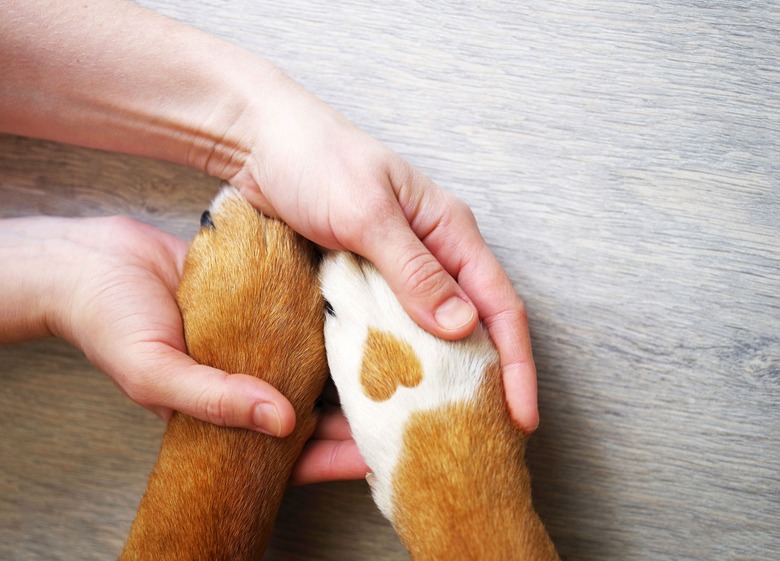How To Know If A Dog Broke His Paw
Puppy guardians and anyone with a dog who likes to roughhouse know this scenario all too well: You see your dog take a tumble, notice them limping, and assume the worst, only to see them walk it off just a little while later. Dogs are well known for their ability to recover from a spill like it's nothing, but sometimes, that limp or lag in their walk may indicate that something is really wrong. If you've ever wondered whether your dog has a broken bone in their paw, there are a few key things to look out for.
Symptoms of a broken paw in dogs
Symptoms of a broken paw in dogs
A dog can break or injure their foot a number of ways, including getting their foot caught in fencing or flooring, having their foot stepped on, being hit by a car, or even stubbing their toe. With a broken paw, a dog will often act similarly to a human with a broken foot.
Often, a dog with a broken paw will limp and will be unable to put much if any weight on that paw, or they may hold that paw up in the air. This lameness can sometimes be indicative of a broken leg or at least the injured area. Additionally, you may notice swelling of the paw or even single toes if your dog has broken a toe. Some dogs may yelp or cry when you attempt to move or touch the paw or may even act out aggressively if the pain is unbearable.
When to bring a dog to the veterinarian
When to bring a dog to the veterinarian
While limps and scrapes can often be waited out, seeking veterinary care for more treatment options is sometimes necessary. You may attempt to examine your dog's paw by gently touching and inspecting the area, but if the exam becomes too painful or if your dog becomes aggressive, it's best left to the pros to reduce the risk of further injury. Keep in mind that not all injuries result in open fractures or obviously broken toes. Soft tissue damage and internal bleeding are also risks, particularly after trauma.
Dog owners should keep their pet confined to a small area, like a crate or box, as much as possible on their way to the doctor. Resist the urge to dig through the first-aid box for anti-inflammatory medication or other drugs. Wait until you see a doctor.
If the leg injury indicates that the dog's paw is broken, your veterinarian will likely recommend X-rays, consulting a veterinary surgeon, splinting and setting, or even amputation in severe cases. If you see any bone sticking through the skin, take your dog to a veterinarian immediately. A broken leg in dogs is a serious injury and will require medical attention and aftercare.
Caring for a dog's injured paw
Caring for a dog's injured paw
Whether your canine's paw is broken, sprained, scratched, or otherwise limited by an injury, a certain level of care should be administered to the affected area in order to assist them on the road to recovery. Confinement is key to your dog's health, as is limiting most physical activity, like running, jumping on or off furniture, and playing with other animals.
Be sure to continue all prescribed pain medication until it's finished and monitor any bandages or aftercare items by keeping them dry, clean, and unchewed. Contact your veterinarian if you notice any foul odor. Splints and casts can sometimes be on a dog's paw for eight to 10 weeks, and surgical procedures may require a similar recovery time.
The bottom line
The bottom line
Signs of a broken paw in dogs often mirror signs of a broken foot in humans. Pet owners should look for signs of swelling, limping, and keeping weight off the foot as indications that something is amiss. You can attempt to examine the paw at home, but if your dog behaves aggressively or seems in pain, bring them to the veterinarian. Avoid giving your dog medication that your veterinarian has not prescribed.


